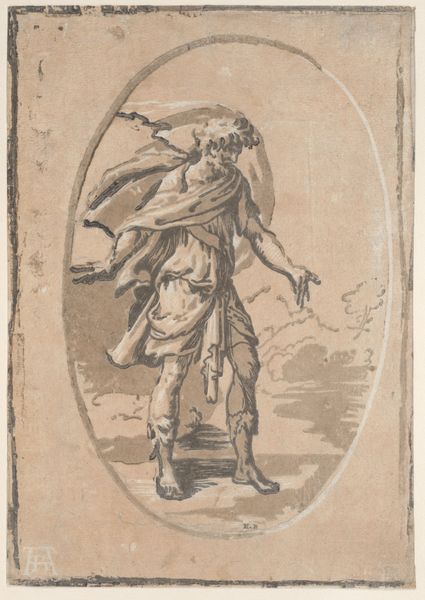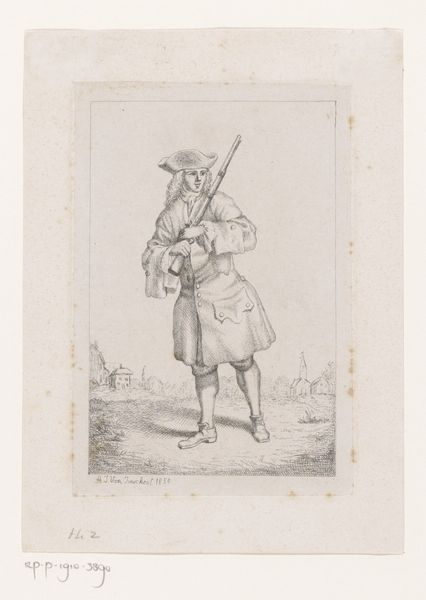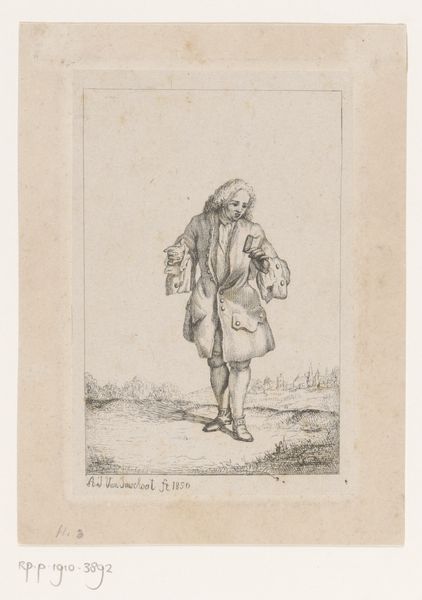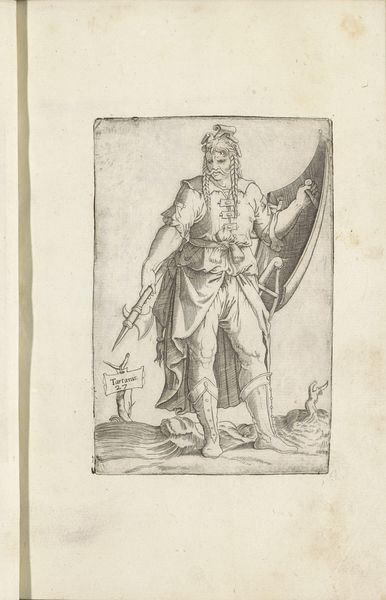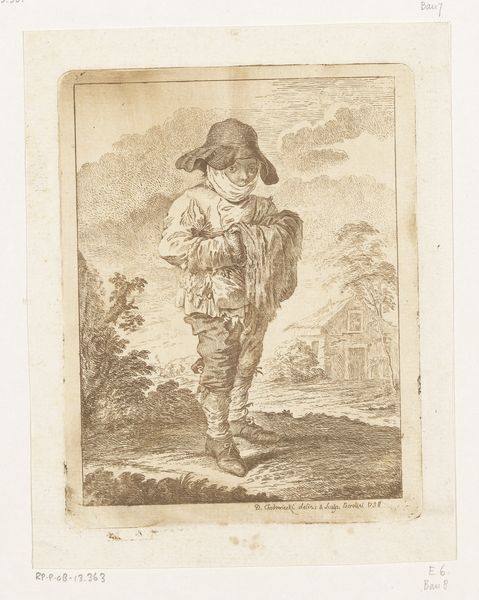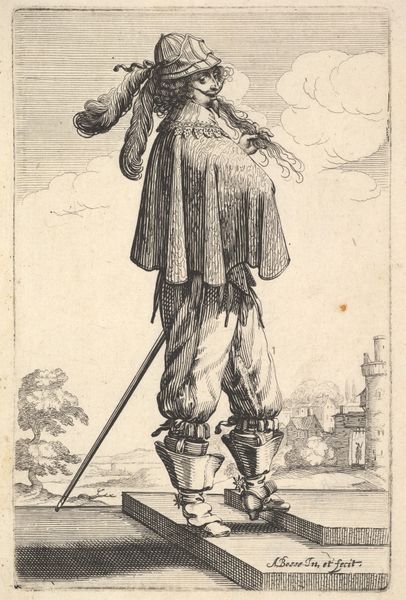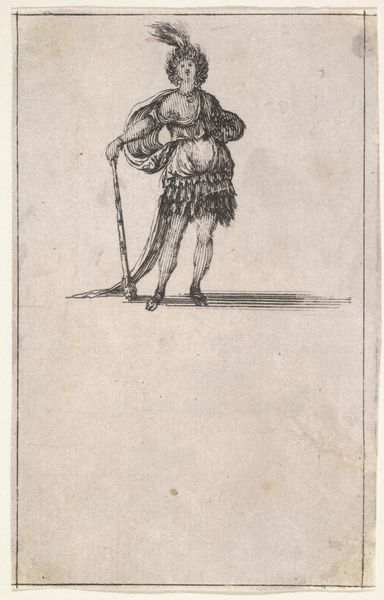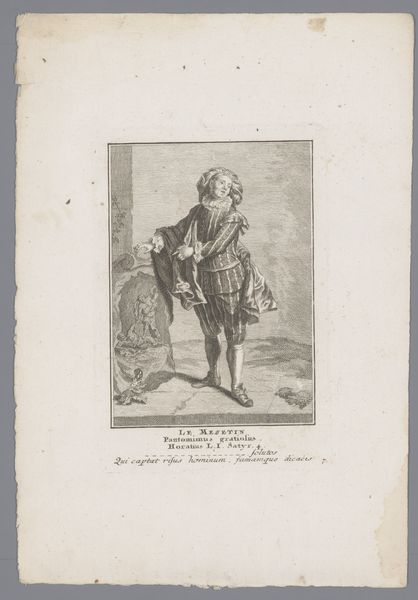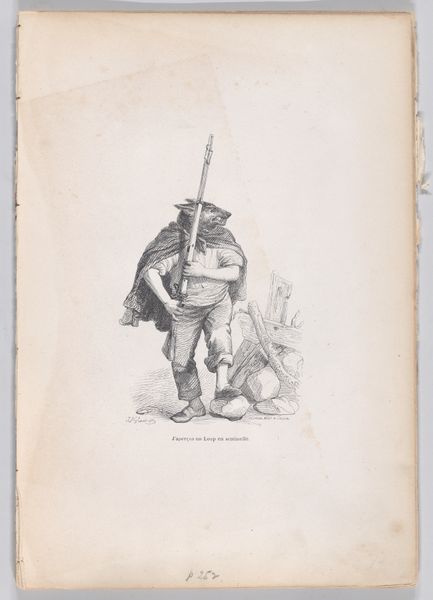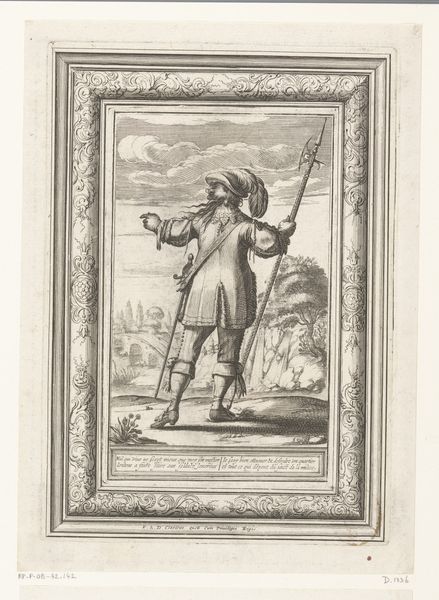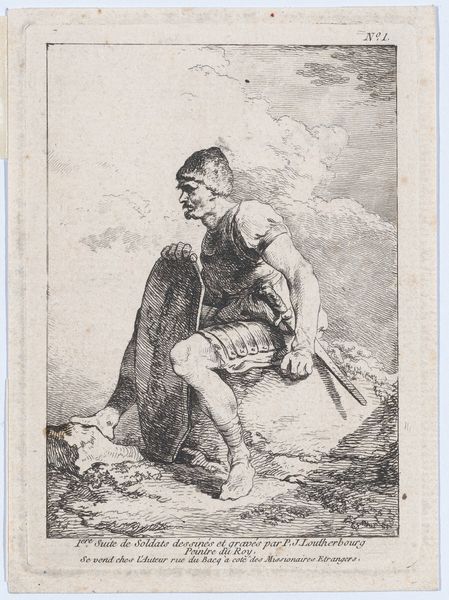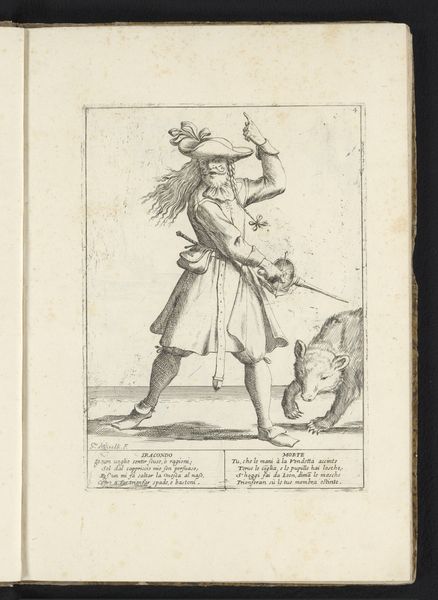
drawing, print, engraving
#
portrait
#
drawing
# print
#
landscape
#
figuration
#
romanticism
#
genre-painting
#
engraving
#
realism
Dimensions: height 339 mm, width 272 mm
Copyright: Rijks Museum: Open Domain
Editor: So this is "Visverkoper te Scheveningen" by Guillaume Philidor Van den Burggraaff, made around 1825. It’s an engraving of a fish seller, seemingly on the beach in Scheveningen. It’s so detailed, and I am fascinated by how this artist depicts the reality of labor! What are your thoughts about it? Curator: Well, immediately I’m drawn to the basket he’s carrying. Consider its weight, its material construction – probably locally sourced. It speaks volumes about the physical demands of the fish trade and the local economy. Notice how the process of engraving captures the textures of the basket weave. Do you think this emphasizes its importance? Editor: Absolutely, and the artist is not just showcasing the labor, but also its setting - the beach. How do these settings contribute to understanding this piece? Curator: Indeed! The setting reinforces the connection to the means of production, highlighting the interplay between the town, the sea, and this man’s work. Also, notice the clothes he’s wearing. Editor: Yes, it speaks of simple working clothes; this makes me consider who this work was for. Would it have been affordable only by wealthier citizens? Curator: A crucial question. The production and consumption of this print are directly linked to the social hierarchies of the time. Prints were often a more affordable alternative to paintings, allowing a broader audience to engage with representations of everyday life and social classes. Perhaps serving as a means of observation of, or even consumption by, people outside his social stratum. Editor: I hadn't considered that connection between affordability, viewership and content. Curator: Thinking about this artwork in terms of material realities, social conditions, and labor helps us go beyond just aesthetics, providing insight into the world in which it was created and consumed. Editor: This changes the way I see art; thanks so much!
Comments
No comments
Be the first to comment and join the conversation on the ultimate creative platform.
